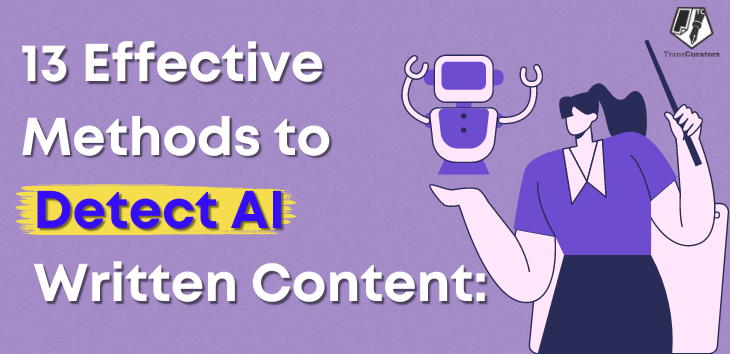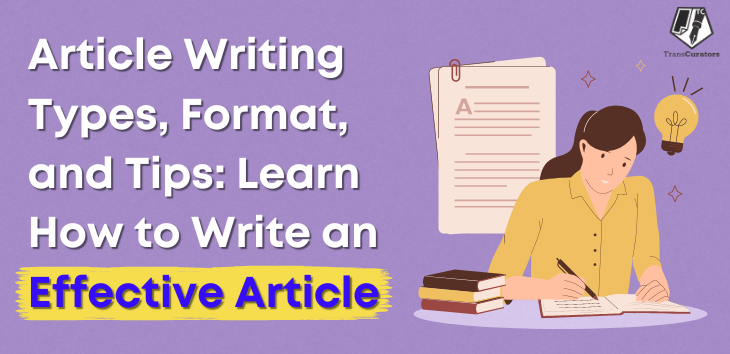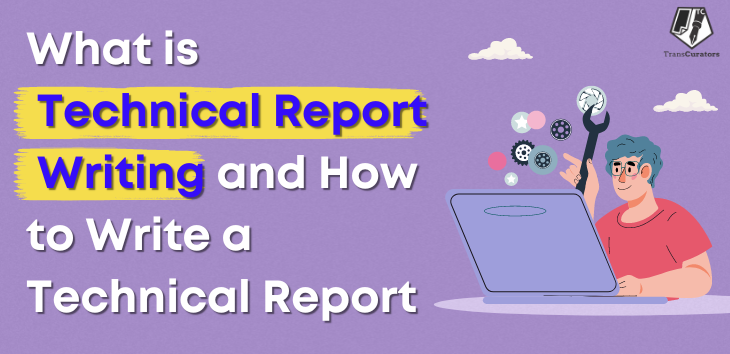
The line between human and artificial intelligence-generated content is increasingly blurred in today’s digital world. With the development of advanced language models, AI can now produce essays, articles, and even creative stories nearly identical to human writing. This poses a problem for readers and professionals who must identify whether the information is human-crafted or machine-generated. As AI’s writing powers advance, it becomes more difficult to distinguish between them. However, a few tell-tale indications might help you identify AI-generated content. In this blog, we dive into 13 practical techniques for identifying AI-generated writing. By studying these methods, you’ll gain insight into the subtle cues that differentiate human creativity from machine-generated output.
What is AI Content Detection?
AI content spotting determines if a piece of written material, such as an article, essay, or other written material, was generated by an artificial intelligence or a person. The method examines text using machine learning algorithms, natural language processing, and other AI techniques to find patterns, irregularities and attributes common to AI-generated content.
The primary purpose of AI content analysis is to figure out the contents precisely. This includes evaluating several written content characteristics, such as language style, grammatical usage, integration, originality, and repetitive or predictable patterns. AI content detection systems are meant to detect these signs, which are often complex and require detailed analysis to identify them correctly.
13 Ways To Detect AI Written Content
1. Repetitive Phrases and Patterns
One of the tell-tale signs of AI-written content is the repetition of phrases and patterns. AI models learn from vast amounts of data, often resulting in repeated expressions or ideas within the text. Unlike humans, who naturally vary their language to avoid monotony, AI may inadvertently reproduce similar phrases, making its writing predictable and repetitive.
2. Lack of Personalization
Human writing frequently reflects human experiences, ideas, and viewpoints, which affect the plot. On the contrary, AI lacks personalization. It tends to produce generic content devoid of the unique voice, differentiating human-authored content. Look for personal narratives, subjective opinions, or emotional delicacy, often missing from AI-generated writing.
3. Overuse of Complex Vocabulary
While AI can create refined language, it can abuse complicated words. A desire to look entertained can result in strained or artificial statements. Human authors balance language and clarity and use complex terms only when appropriate within context. Excessive use of advanced language or jargon can indicate AI contribution.
4. Punctuation and Grammar Anomalies
AI can struggle with complex punctuation and grammatical norms, causing mistakes in its writing. Standard errors are using commas incorrectly, generating strange sentence designs, or wrongly using punctuation signs like semicolons or dashes. Human authors usually stick to grammatical rules better, yet AI-generated content can highlight punctuation and syntactic irregularities.
5. Contextual Awareness and Coherence
A good essay has a consistent flow of ideas appropriate to the work’s context and objectives. However, AI can generate details that lack knowledge of context or logical consistency. Look for sudden changes, disconnected paragraphs, or extra content that doesn’t add to the main plot. Human authors follow a logical order of ideas, ensuring every sentence helps significantly to the wanted statement.
6. Stilted or Formal Language
Content generated by AI generally has a fixed, advanced vocabulary that can seem as artificially organised or unnatural. There are likely no idioms, conversational details, or casual phrases common in human communication. As AI models give more attention to formal language and grammatical accuracy than verbal clarity, this can indicate artificial intelligence support when words or plots lack a natural flow.
7. Inconsistent Tone or Style Shifts
AI can not keep the same grammar or language throughout the content. AI-generated writing can be detected by sudden changes from formal to casual vocabulary, plot inconsistencies, or the unstable use of poetic elements. Human authors carefully maintain an audience-resonant tone and purpose aligned with their writing. As for the AI, it could have trouble maintaining technical continuity across the whole essay or sentence.
8. Redundancy and Filler Content
Artificial intelligence-generated content could have unnecessary details or words that repeat itself. This involves amending ideas without giving significant context or expanding the paragraphs to fulfil word count limits. Human authors put a high value on simplicity and clarity, avoiding unnecessary repetition and extra detail that doesn’t improve the reader’s understanding. Spotting unneeded information or additional details could indicate artificial intelligence support in the content.
9. Factually Inaccurate Information
Although AI can take in vast amounts of data, its limited understanding of context and real-world expertise can lead to logically incorrect information or wrong conclusions. Anything that seems AI-generated can be detected by looking for logical mistakes, inaccurate information or unjustified phrases. Human authors usually conduct in-depth study and analysis to guarantee genuine rightness and verify facts from reliable sources.
10. Predictable Structures and Formulas
AI-generated content usually depends on supervised data and algorithms, especially for recurring jobs like SEO writing or template-based styles. Finding uniform formats, formulaic introductions or conclusions, or strict adherence to predetermined patterns can suggest AI support. Human writers add creativity and originality to their work, changing design and presentation to attract readers and achieve likely communication goals.
11. Overemphasis on Keywords or SEO Optimization
AI-written content values keyword density and SEO optimization over natural language flow and meaningful content. High keyword repetition, unusual sentence placement, or unusual language created particularly for search engine algorithms could mean AI-generated content. Human writers add keywords to the plot, naturally assuring readability and validity while favouring audience engagement over SEO analytics.
12. Ambiguity or Lack of Specificity
AI-generated data could be unclear or lacking in clarity when providing facts or presenting examples; weak explanations, common comments, or fundamental insights that do not go into particular details or specifics related to human observation and analysis can indicate AI input. Human writers increase their sentences with specific situations, vivid descriptions, and complex views that improve knowledge and relate to the audience’s perspectives.
13. Emotional Intelligence and Creativity
Human writing often indicates emotional intelligence and creative thinking through subtle language, narrative techniques, and imaginative flair. While AI can produce logical narratives, it might not portray the emotional delicacy, sympathetic resonance, and imaginative depths that differentiate human-authored creations. A lack of emotional presence, distinctive narrative, or creative originality can point to AI-generated content.
Read More- Dangers of Over Relying on AI-Generated Content: Key Insights
Following these 13 distinctive characteristics of AI-written content can enhance your ability to discern between machine-generated text and human-crafted writing. Whether you’re evaluating articles, essays, marketing copy, or creative works, recognizing these indicators will empower you to make informed judgments about the authenticity, credibility, and quality of the content you encounter in today’s digital landscape. Maintaining a critical eye and leveraging these detection methods will ensure transparency, integrity, and trustworthiness in digital communication as AI technologies evolve.
Why is AI Content Detection Important?
Maintaining Academic Integrity:
In schools, AI-generated information can compromise the reliability of academic examinations. Students can use artificial intelligence (AI) tools to generate essays or assignments, making it impossible for teachers to judge their complete understanding and skills. AI content detection improves fairness and integrity in education by guaranteeing that submitted work is original and human-crafted
Ensuring Authenticity in Media and Journalism:
The rising number of AI-generated content and reports threatens journalism. Human journalists generate news content, which protects credibility and audience trust. AI content detection can assist media organisations with checking the truthfulness of what they publish and minimising the spread of rumours.
Preserving Brand Voice and Quality:
A consistent brand voice is critical for businesses and entrepreneurs. AI-generated content can lack the personal touch and details that create a brand’s character. Companies can use AI content recognition tools to guarantee that their content matches their brand voice and quality requirements.
Preventing Plagiarism:
AI-generated writings could add to plagiarism difficulties because they can produce language that closely resembles existing content. Detecting AI-written stuff assists in identifying potential plagiarism and verifying that all published information is unique and properly acknowledged.
Enhancing Content Moderation:
Social media platforms and online forums commonly face problems monitoring content to prevent spam, confusion, and improper topics. AI content detection can help identify and report AI-generated posts, improving the impact of content filtering systems.
Can AI Tools Detect AI-Generated Content?
Yes, AI tools can detect AI-generated content. These tools use various techniques to analyse and identify the characteristics of AI-written text. Here’s how they work and why they are effective:
1. Pattern Recognition in Detail
AI content detection systems use advanced algorithms to detect patterns common to AI-generated content. These patterns can include specific word combinations, sentence structures, or repeated phrases. Human writing commonly varies significantly, with a mix of large and short expressions, a broad lexicon, and various expressions. Meanwhile, AI-generated language can follow more predictable patterns due to the training data provided.
2. Language Style Analysis Explained
Writing habits can be an indication of AI-generated content. Human writers’ distinct tones and genres represent their personalities, experiences, and viewpoints. But AI can produce content that lacks a personal touch. AI detection tools can differentiate between human and AI writing by analysing tone, voice, and creative options. For example, a sentence that continually keeps a formal tone regardless of context could be a warning indicator.
3. In-Depth Grammar and Syntax Checking
AI-generated material can be both too perfect and mildly imperfect. While AI programs can generate language with perfect grammar, they can also create unusual mistakes in human writing. For example, AI can misinterpret common sense idioms or produce awkward language. Detection tools examine these grammatical and syntactical attributes for irregularities that indicate AI support.
4. Contextual Coherence Assessment
Human authors generally write information that follows a logical order and apparent shift in ideas. However, AI can generate writing that appears consistent on the surface but needs a more profound knowledge of the context. Detection tools evaluate the text’s consistency by looking at how well the concepts are linked and whether the content makes sense. Inconsistencies or sudden topic shifts can be evidence of AI-generated content.
5. Originality and Uniqueness Checks
Originality is a vital aspect of high-quality content. AI detection tools compare the text to massive current databases to look for similarities. AI can create it if the written components closely match the previously released components. This helps to detect unwanted plagiarism and ensures the information is unique and original.
6. Technical Markers and Metadata Analysis
In addition to sentence analysis, some AI detection tools look at detail and other technological clues. This can entail inspecting the file’s characteristics, like creating and updating dates and other digital footprints. These technical labels can confirm whether an AI-generated the content.
Importance of AI Content Detection in Various Sectors
1. Education
AI content detection is essential for guaranteeing academic credibility in the education industry. With the development of AI writing tools, students can utilise them to generate assignments, essays, or research papers. This makes it difficult for teachers to judge students’ genuine knowledge and talents. AI content detection tools assist educators in recognizing AI-generated data, ensuring that examinations are fair and proof of the student’s true abilities.
2. Journalism and Media
Maintaining trust is vital for journalists and media organizations alike. When AI is used to generate headlines and reports, it tends to damage credibility. AI content detection platforms assist media outlets in verifying the truthfulness of their content, confirming that human journalists write it and comply with the standards of journalism. This contributes to the reliability of news reporting and avoids the spread of lies.
3. Marketing and Business
In marketing and business, having a clear brand voice is crucial for establishing trust and engaging the audience. AI-generated content could lack the personal touch and details that create a brand’s character. AI content analysis helps businesses guarantee that their content fits in with their brand voice and satisfies quality requirements, thus improving customer trust and loyalty.
4. Publishing and Content Creation
In the publishing sector, uniqueness and creativity are valued. AI content recognition tools help editors and creators ensure their work is original and not AI-generated. This helps sustain high creative and quality standards so published material connects with readers and stands out in its field.
5. Social Media and Online Platforms
Social media networks and online forums often face problems filtering ideas to prevent spam, false information, and wrong content. AI content detection helps identify and highlight AI-generated posts, improving post-monitoring systems’ efficiency. This helps create a safe and trustworthy online environment for users.
Read More- What are the primary advantages of Generative AI in content creation?
The Future of AI Content Detection
As machine learning evolves, so will the methods for spotting AI-generated content. The next generation can include advanced algorithms capable of understanding deeper contextual points and detecting minor patterns. This increases the accuracy and reliability of AI content detection tools, making them even more helpful in various applications.
Also, a balance between AI developers and detecting tool providers will be important in staying ahead of developing AI writing skills. Constant research and development in this field will help AI content authentication solutions keep in line with fast-growing AI technologies.
Conclusion
As AI evolves and integrates into every aspect of content creation, detecting AI-written content becomes more critical. Understanding and using these 13 techniques to detect AI-generated text—such as recognising repetitious words, analysing language style, and checking for contextual coherence—will assure the authenticity and quality of your work. Whether you’re an educator, a writer, a marketer, or a content creator, these ideas can help you keep your work authentic and creative. If you need expert assistance in curating high-quality, human-authored content or want to ensure your content maintains its unique voice and authenticity, consider partnering with TransCurators. Our professional writers and editors are dedicated to delivering content that resonates with your audience and stands out in the digital landscape. Visit TransCurators today to learn more about our services and how we can help you achieve your content goals.
Frequently Asked Questions
A1. AI might use complex vocabulary unnecessarily in an attempt to sound sophisticated. This can result in sentences that feel forced or unnatural. Human writers usually balance complex vocabulary with clarity, ensuring their language is appropriate for the context.
A2. AI-generated content may misuse punctuation marks, exhibit inconsistent comma usage, or have awkward sentence structures. These anomalies are less common in human writing, where grammatical conventions are typically followed more consistently.
A3. AI can generate text that seems coherent but needs deeper contextual understanding. This can result in abrupt transitions, disconnected paragraphs, or irrelevant information that doesn’t contribute meaningfully to the narrative.
A4. AI can generate content with incorrect information or erroneous interpretations due to contextual or real-world knowledge limitations. Fact-checking and verifying information from credible sources can help identify inaccuracies typical of AI-generated text.
A5. AI tools can detect AI-generated content by analysing patterns, language style, grammar, coherence, originality, and technical markers. These tools leverage machine learning algorithms and large databases to identify the characteristics typical of AI-written text.



